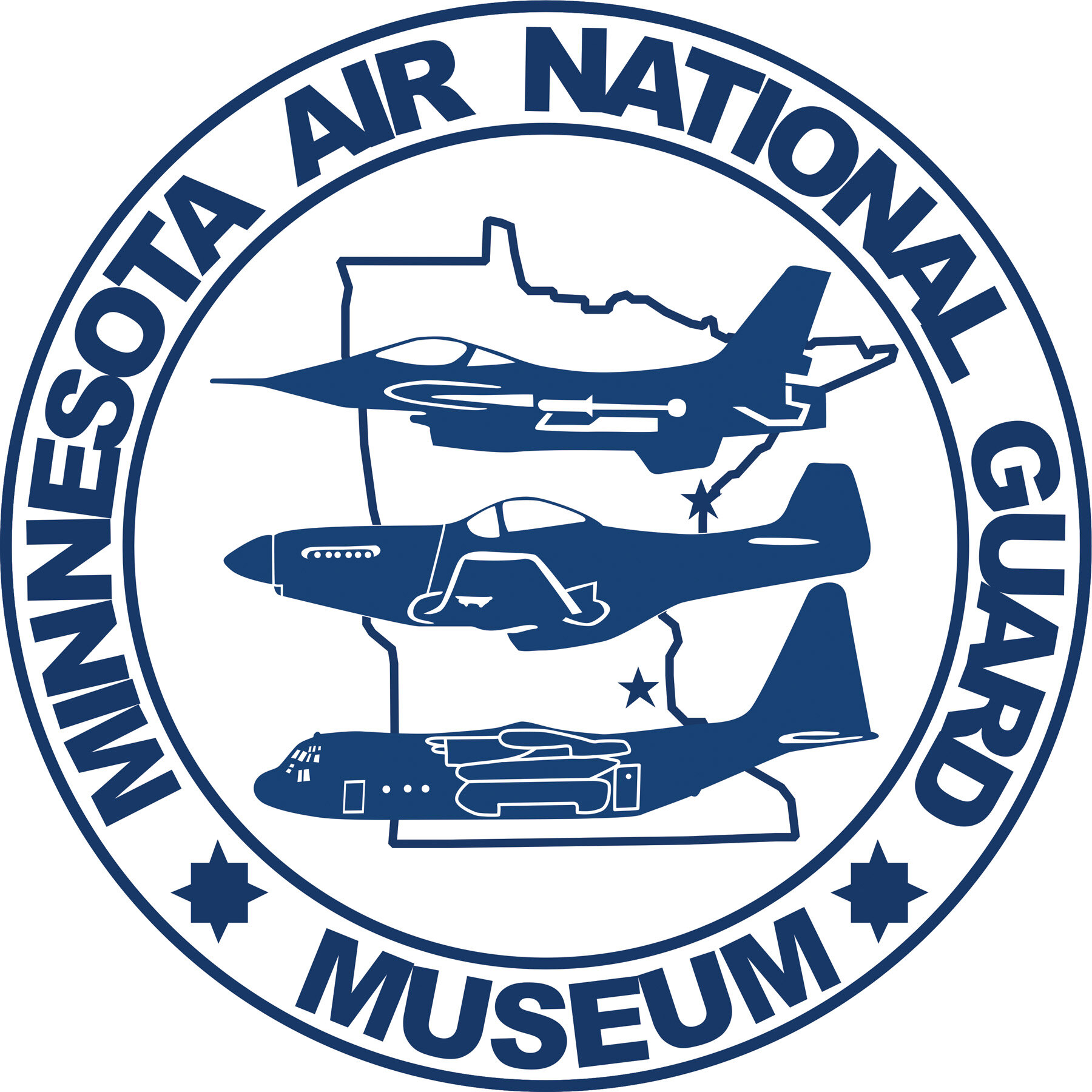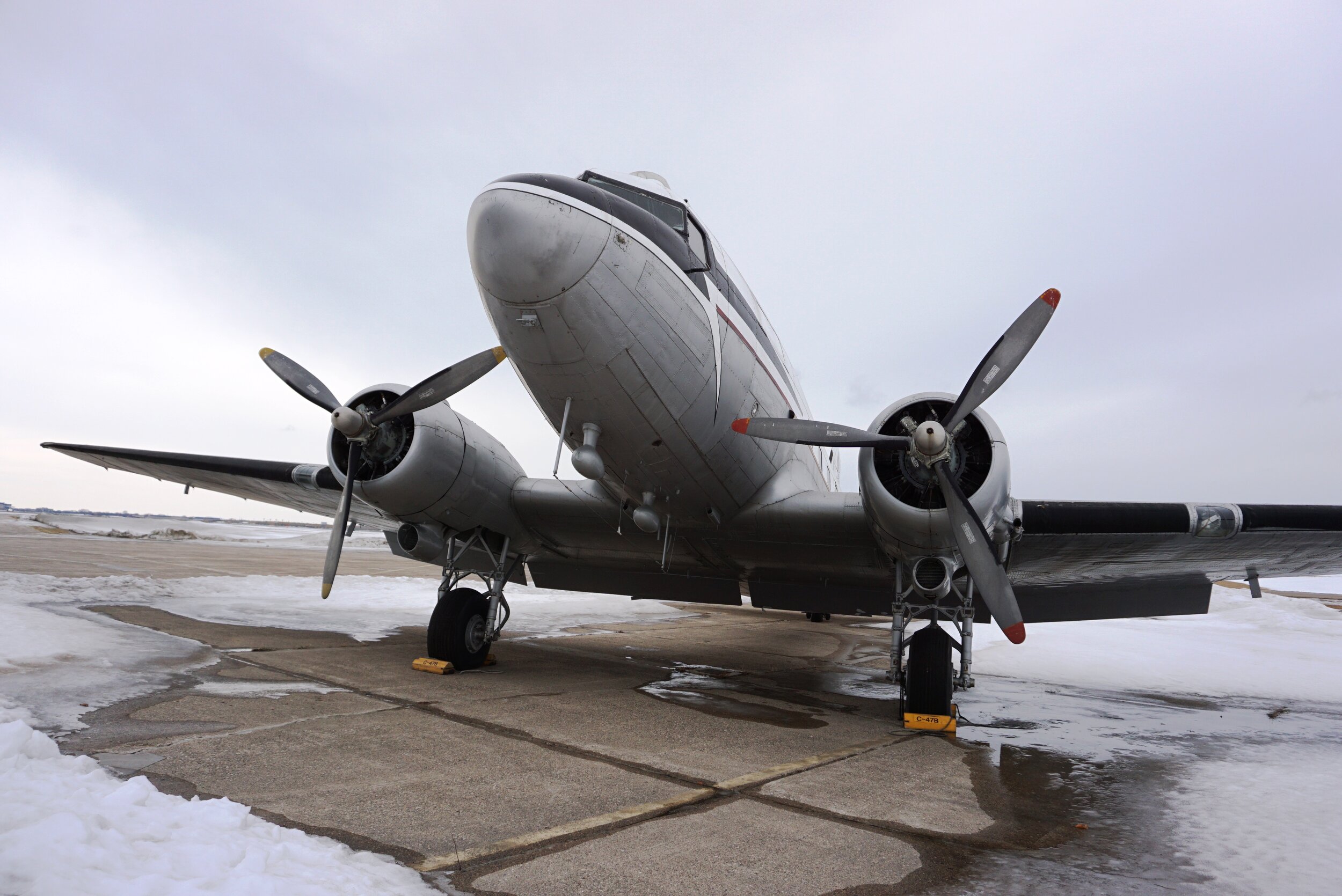DOUGLAS C-47 “SKYTRAIN”
USAAF SERIAL NUMBER 42-49322
U.S. NAVY BUREAU NUMBER 50793
Manufacturer:
Designation:
Version:
Name:
Nickname:
Type:
Brief History
The C-47 flew with the Minnesota Air National Guard with the 109th FIS until the late 1950s and the 179th FIS until the early 1970s. It was a support aircraft carrying crews and supplies to deployed exercises. The C-47, nicknamed the “Gooney Bird,” first flew as the DC-3 in 1935; the actual C-47’s first flight was in 1941. The C-47 is a military transport aircraft first developed as the DC-3 commercial airliner.
It was used extensively during WWII and remained in front-line operations through the 1950s, with a few remaining in operation today. The C-47 differed from the civilian DC-3 in numerous modifications, including fitted with a cargo door and strengthened floor. There were over 10,000 built. Some notable contributions the C-47 made during WWII were its success in “Flying the Hump” and the “Berlin Airlift.” Several variations of the C-47 flew with the USAF through the Vietnam War.
After WWII, thousands of surplus C-47s were converted to civil airline use, with some remaining today. Many flyable DC-3/C-47s have remained in the air for close to 75 years and are still going strong. The DC-3/C-47 was also licensed and built in Japan and Russia.
Interesting Facts
The museum aircraft started as a C-47 in 1944, MSN 26583, USAAF serial number 42-49322, then transferred to the U.S. Navy and redesignated R4D-6R, Bureau Number 50793. This aircraft was transferred to the FAA, converted to a DC-3C on 12-1957, registered as N33, and used for ILS and terminal approach inspections, plus the detailed commissioning inspections of all new facilities.
The FAA maintained a fleet of 60 of these aircraft. This aircraft was the first aircraft in this museum’s collection. Another version of this aircraft, the AC-47 “Spooky,” served as a successful gunship in the Vietnam War, nicknamed “Puff the Magic Dragon.” Its primary mission involved protecting villages, hamlets, and personnel from mass attacks by VC guerrilla units. C-47s are regular visitors at air shows across the country.
Dimensions
Fuselage Length: 63 Feet, 9 Inches
Wingspan: 95 Feet, 6 Inches
Height: 17 Feet, 0 Inches
Weights
Empty Weight:
Max Takeoff Weight:
Payload: 6,000 Pounds
Propulsion
Powerplant: 2 Pratt and Whitney R-1830-90C Twin Wasp, 14 cylinder Radial Engines, 1,200 HP Each
Horsepower:
Performance
Range: 1,600 Miles
Cruise Speed:
Max. Speed: 224 MPH
Ceiling: 26,400 Feet
Crew & passenger capacity
Crew: 3
Capacity: 28 Troops
Armament
None





